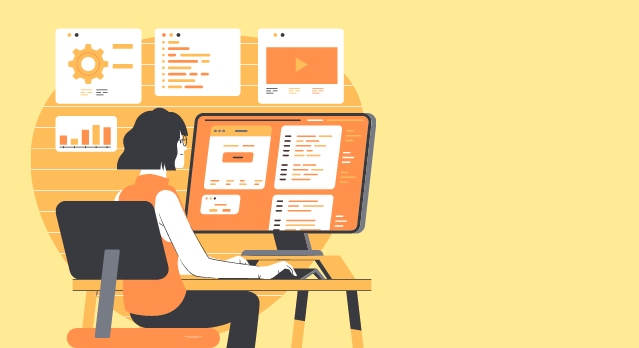
The development of software platforms or applications that are expressly intended to promote learning and education is known as educational software development. The teaching and learning processes are facilitated by these software solutions, which provide diverse tools, resources, and interactive features.
Table of Contents
What Exactly is Educational Software?
Digital tools and programs created to improve educational experiences are referred to as educational software. It may be used for self-study, in a classroom setting, or in an online learning environment. A broad variety of topics may be covered by educational software, from general academic disciplines like math and physics to specialist ones like language learning, programming, or music instruction. You can turn to a company of developers who will be with you throughout the development of the application. If you need such help, then pay attention to this education software development company.
How Do Educational Software Programs Operate?

Delivery of Content
Learning materials are delivered to students using educational software in a variety of media, including text, photos, videos, animations, and interactive simulations. Depending on their learning goals, users may access the information and advance at their own speed.
Interactivity and Participation
Interactive elements are often used in educational software to actively engage students. It may contain exercises that let students apply their knowledge and get rapid feedback, such as tests, games, puzzles, virtual laboratories, or simulations.
Progress Monitoring and Evaluation
Software used in education keeps track of students’ progress, evaluates their performance, and gives them feedback on their accomplishments. To gauge students’ comprehension and pinpoint areas for development, it could contain tests, quizzes, or assignments.
Adaptation and Personalization
Numerous educational software programs provide individualized learning opportunities. Depending on the interests, ability levels, and learning preferences of the learners, they may modify the activities and material. Learners are able to interact with the content more successfully because of the personalization.
Communication and Cooperation
Platforms for educational software may let students and teachers collaborate and communicate. To promote engagement, group work, and information exchange, they might provide discussion boards, chat tools, or virtual classrooms.
Data Insights and Analysis
Data on the interactions, development, and performance of learners are often gathered by educational software. The analysis of this data may provide students, teachers, and administrators with new information.
The Trend in Educational Software Development

Personalized Education
In the creation of educational software, personalization is a major trend. Artificial intelligence (AI) and machine learning (ML) technologies are being used in software solutions to tailor assessments, activities, and material to the requirements, preferences, and learning styles of specific learners.
Mobile Education
Mobile learning has become a common trend in educational software due to the rising use of smartphones and tablets. Mobile-friendly platforms and applications make it easier for students to study while on the move and provide them access to educational materials whenever and wherever they are.
Gamification
Gamification is being increasingly used in educational software to boost motivation and student engagement. Educational software makes learning an engaging and fun process by combining game features like challenges, awards, leaderboards, and progress monitoring.
Augmented and Virtual Reality
Technologies like virtual reality (VR) and augmented reality (AR) are becoming more popular in the creation of instructional applications. By building virtual worlds or projecting digital material onto the actual world, they provide immersive learning experiences that let students explore challenging ideas and situations.
Adaptive Evaluations
The use of adaptive tests in educational software is growing. These tests employ algorithms to dynamically change the content and difficulty depending on the learners’ replies, resulting in more precise and tailored evaluations of the learners’ knowledge and abilities.
Conclusion
The goal of the dynamic and developing area of educational software development is to improve teaching and learning. The most recent technology advancements may be used to define clear learning goals, determine the target audience, and produce engaging, tailored, and efficient instructional software.

